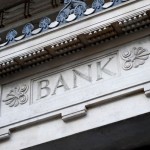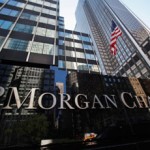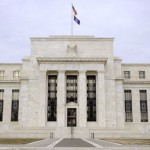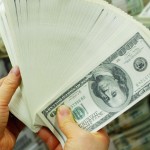Traders Flood U.S. With $3.4 Trillion of Bond-Auction Demand
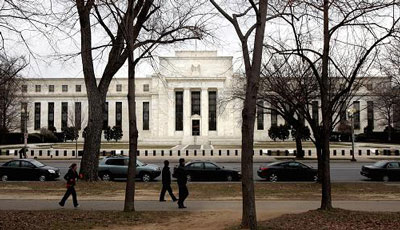
The intensifying debate over when the Federal Reserve raises interest rates is little more than a sideshow when it comes to the ability of the U.S. to borrow.
For all the concern fixed-income assets will tumble once the central bank boosts rates, the Treasury Department still managed to get investors to submit $3.4 trillion of bids for the $1.12 trillion of notes and bonds sold this year, according to data compiled by Bloomberg. That represents a bid-to-cover ratio of 3.06, the second-highest on record and up from 2.88 in all of last year.
Attracting investors is critical for the U.S. as it finances a debt load that has more than doubled to almost $18 trillion since before the financial crisis. The appeal of Treasuries was on display last week as benchmark 10-year notes rallied the most since March while investors sought a haven amid rising concern over the health of a Portuguese bank.
“There are still plenty of needy buyers,” William O’Donnell, head U.S. government bond strategist at Royal Bank of Scotland Group Plc’s RBS Securities unit in Stamford, Connecticut, said in a July 8 telephone interview. “We’ve seen it from all sources,” said O’Donnell, whose firm one of the 22 primary dealers of U.S. debt obligated to bid at Treasury auctions.
Lowered Outlook
Behind the demand is speculation the global economy isn’t growing fast enough to allow central banks to easily withdraw from loose monetary policies that have supported bond markets around the world. Barclays Plc, another primary dealer, cut its forecast for worldwide gross domestic product on July 11 to an increase of 3.1 percent at an annual rate this quarter from 3.4 percent.
Fed officials “noted that monetary policy needed to continue to promote the favorable financial conditions required to support the economic expansion,” according to the minutes of the June 17-18 Federal Open Market Committee meeting released July 9 in Washington.
At the same time, global regulatory changes related to the Dodd-Frank Act and mandated by the Volcker Rule and Basel III are requiring banks and financial institutions to hold more high-quality assets such as Treasuries.
U.S. banks own more than $1.9 trillion of U.S. government and agency securities, up from $1.2 trillion in 2008, Fed data show. Foreign investors hold a record $5.96 trillion, more than double their stake of six years ago.
Bond Rally
Last week, 10-year yields fell 12 basis points, or 0.12 percentage point, to 2.52 percent, according to Bloomberg Bond Trader prices. The price of the benchmark 2.5 percent note due in May 2024 rose 1 2/32, or $10.63 per $1,000 face amount to 99 27/32. The yield was 2.53 percent today as of 12:01 p.m. in Tokyo.
The gains helped push returns this year on Treasuries of all maturities to an average of 3.3 percent, according to the Bloomberg U.S. Treasury Bond Index. Fed policy makers, in minutes of the June meeting, said investors may be too complacent and are “not factoring in sufficient uncertainty” about the economy and interest rates amid rising prices for stocks and bonds around the world.
Portugal’s second-largest bank by market value, Banco Espirito Santo SA, jolted global markets last week when it said it could face as much as 1.2 billion euros ($1.6 billion) of losses from loans to its parent companies after one of them missed repayments on short-term debt.
‘Still Believe’
Banco Espirito revealed its exposure to related companies on July 11, calming markets and indicating to some investors that the turmoil wouldn’t prevent the Fed from continuing on its path of reducing unprecedented monetary stimulus.
“The Fed is going to raise rates in the first half of next year, given the continuing economic strength and the creep higher in inflation,” Jennifer Vail, head of fixed-income research at Minneapolis-based U.S. Bank Wealth Management, which oversees $112 billion, said in a July 10 telephone interview. “We still believe rates are headed higher.”
This year’s auction demand is surpassed only by the 3.13 bid-to-cover ratio in 2012, Treasury data compiled by Bloomberg show. That was when a worsening of Europe’s sovereign debt crisis led investors to the safety of Treasuries and the Fed began a third round of bond purchases under a policy known as quantitative easing.
The ratio held above 3 each month this year after fluctuating between 3.11 and 2.65 in 2013. In 2007, before the global financial crisis, the Treasury attracted $1.48 billion of bids for the $560.3 billion of notes and bonds sold at auction, a bid-to-cover ratio of 2.64.
Yield Forecasts
Bids are rising even as economists forecast higher yields on speculation faster growth will fuel inflation, making bonds’ fixed-interest payments less attractive. They also see the end of the Fed’s bond-buying program, which the minutes projected would cease in October, as a precursor to higher rates in 2015.
Speculation over when the Fed will raise its target rate for overnight loans between banks from the range of zero to 0.25 percent it has been in since late 2008 has intensified after government reports showed the economy added at least 200,000 jobs in each of the past five months.
Yields on 10-year notes, which help determine borrowing cost for companies and individuals, may rise to 3 percent by year-end and to 3.61 percent at the end of 2015, according to the median estimate of more than 60 economists and strategists surveyed by Bloomberg from July 3 to July 9.
JPMorgan Chase & Co. and Goldman Sachs Group Inc. are among banks that pulled forward their predictions for the first Fed rate increase to the third quarter of 2015 from as late as 2016.
‘Quicker Progress’
“We’re making quicker progress toward full employment and price stability than we thought,” Michael Feroli, chief U.S. economist at JPMorgan in New York, said in a July 10 interview. “As wage growth normalizes, interest rates need to as well.”
The same survey showed they expect the federal funds rate to rise to 1 percent by the end of 2015.
Adding to the allure of Treasuries are the higher yields they offer over comparable-maturity debt in other parts of the world. Benchmark U.S. 10-year notes yielded 1.38 percentage points more than German bunds this month, the most since 1999. The average over that period is about 0.38 percentage point. Foreign demand was evident at last week’s auction of $13 billion in 30-year Treasury bonds. Indirect bidders — a class of investors that includes foreign central banks and institutions – – purchased 53.2 percent of the debt, the most since February 2006, according to Treasury data.
Terminal Rate
Foreign investors boosted their stake in U.S. government debt in the first four months of the year by 2.7 percent, or $158.9 billion, to $5.96 trillion, according to the latest Treasury Department data. That compares with an increase of 4.1 percent, or $228.2 billion, for all of 2013.
For Thomas Graff, who manages $3.6 billion of fixed-income assets at Brown Advisory Inc. in Baltimore, longer-maturity debt holds appeal after the Fed lowered its outlook for the so-called terminal federal funds rate, or where it ultimately expects to stop raising rates, to 3.75 percent from 4 percent.
“The terminal rate is lower than it used to be,” Graff said in a July 8 telephone interview. Should growth hover in the 2 percent range, then the Fed’s benchmark rate will peak below 4 percent, meaning yields on 30-year bonds “should probably be below 3 percent,” compared with 3.34 percent at the end of last week, he said.
Source: bloomberg









